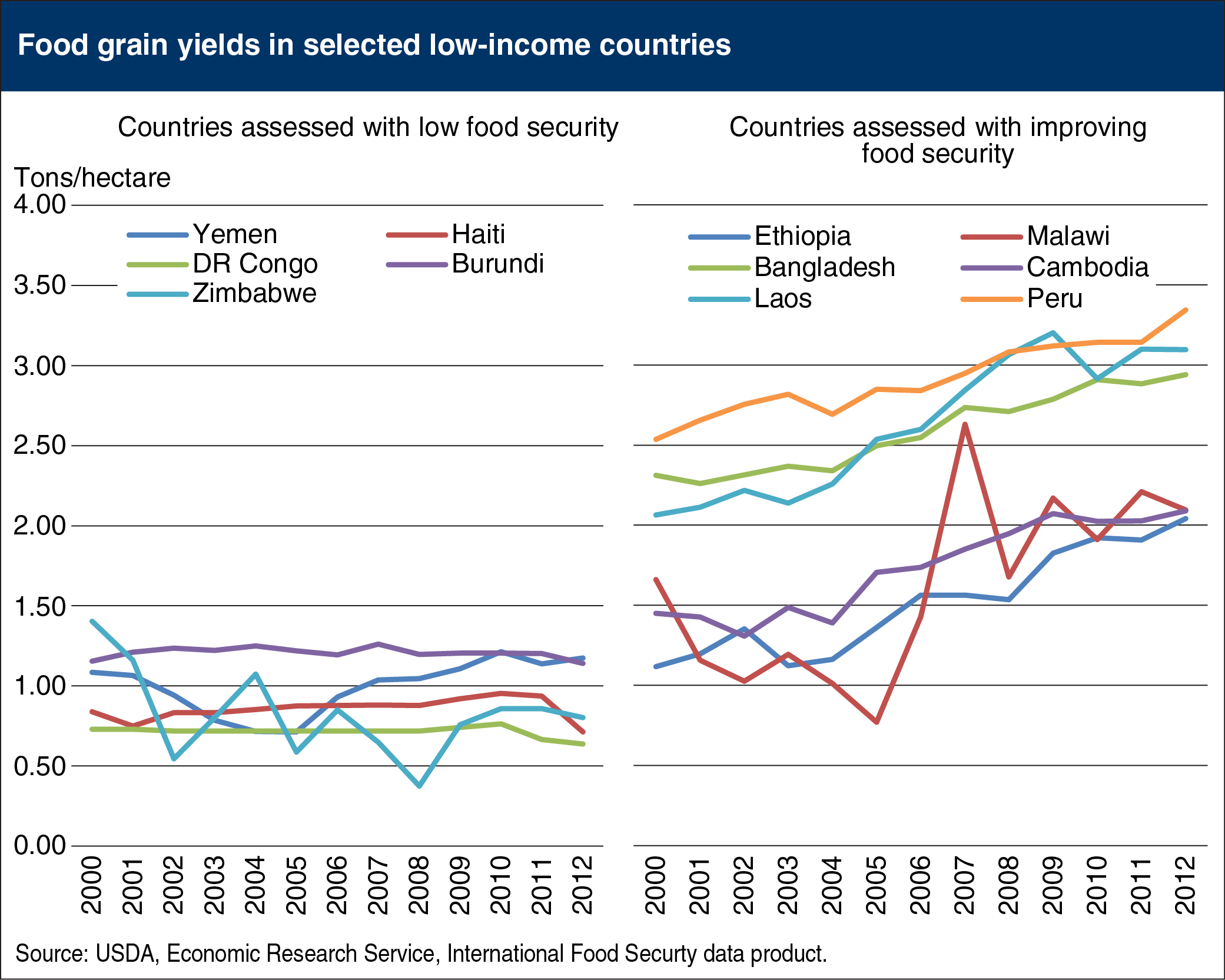Food grain yields key to improving food security in low-income countries
- by Stacey Rosen
- 5/12/2015

Eighty percent or more of grain supplies are produced domestically in a majority of the 76 countries included in USDA’s annual International Food Security Assessment, making food grain production key to the assessment of food security conditions. Historically, area expansion was the main driver behind improved performance, but over the last two decades, production increases have stemmed primarily from attaining higher yields. Countries with higher yield growth have generally made steady progress toward reducing the shares of their population assessed as food-insecure. However, per hectare grain yields in a number of countries remain well below the world average and have failed to grow, resulting in relatively little progress towards reducing their food-insecure populations. In the Sub-Saharan Africa region, which generally includes most of the more vulnerable, low- and middle-income countries assessed, ERS analysis indicates that more countries are successfully adopting modern seed varieties that are contributing to improved yields. For additional analysis, see International Food Security Assessment, 2014-24.

